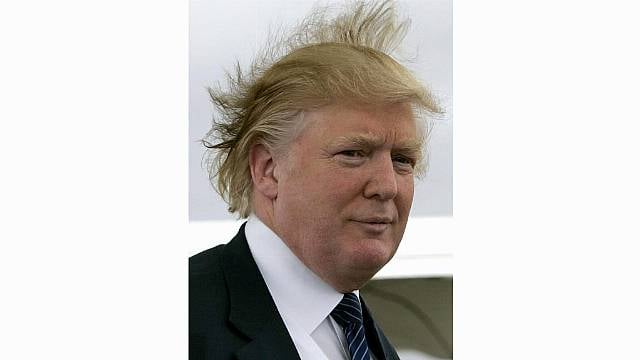President Joe Biden’s administration is reversing a Trump-era rule approved after the former president complained he was not getting wet enough because of limits on water flow from showerheads.
The Energy Department is going back to a standard adopted in 2013, saying it provides plenty of water for a good soak and a thorough clean.
The rule change will have little practical effect, since nearly all commercially made showerheads comply with the 2013 rule, despite the pet peeve of the former president.
While publicly talking about the need to keep his hair “perfect”, Mr Trump made it a personal issue to increase water flow and dial back longstanding appliance conservation standards — including for lightbulbs, toilets and dishwashers.

“So showerheads — you take a shower, the water doesn’t come out. You want to wash your hands, the water doesn’t come out,” he said at the White House last year.
“So what do you do? You just stand there longer or you take a shower longer? Because my hair — I don’t know about you, but it has to be perfect. Perfect.”
Consumer and conservation groups said the 2020 rule change was silly, unnecessary and wasteful, especially as the West bakes through a historic two-decade megadrought.
An Energy Department official said the action clarifies what has been happening in the marketplace, as showers that provide the extra supply of water desired by Mr Trump are not easily found.
Since 1992, federal law has dictated that new showerheads should not pour more than 2.5 gallons of water per minute.
As newer shower fixtures came out with multiple nozzles, the Obama administration defined the showerhead restrictions to apply to what comes out in total. So if there are four nozzles, no more than 2.5 gallons in total should come out of all four.
The Trump-era rule, finalised in December, allowed each nozzle to spray as much as 2.5 gallons, not just the overall showerhead.
A proposed rule change, set to be published in the Federal Register, reverts to the Obama-era standard. The change will ensure that consumers continue to save money while reducing water use and paying lower energy bills, the Energy Department said. Officials estimated that the Obama-era rule saved households about 38 dollars a year.
The department said it “believes the 2013 definition of a showerhead strikes the right balance by allowing consumers to continue to have showerhead choices in the market, while placing an emphasis on water conservation and reduced utility bills”.







